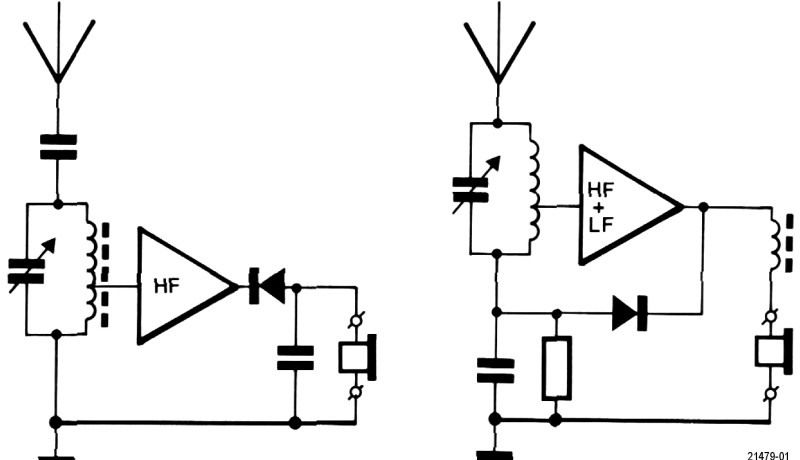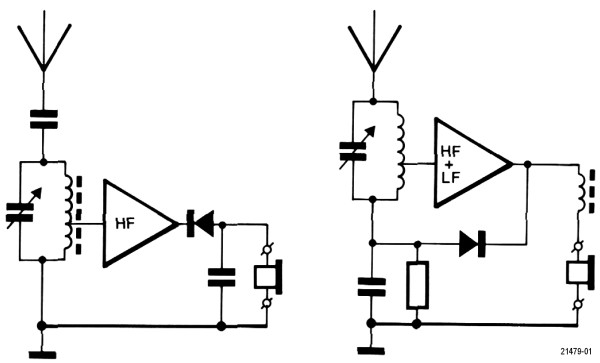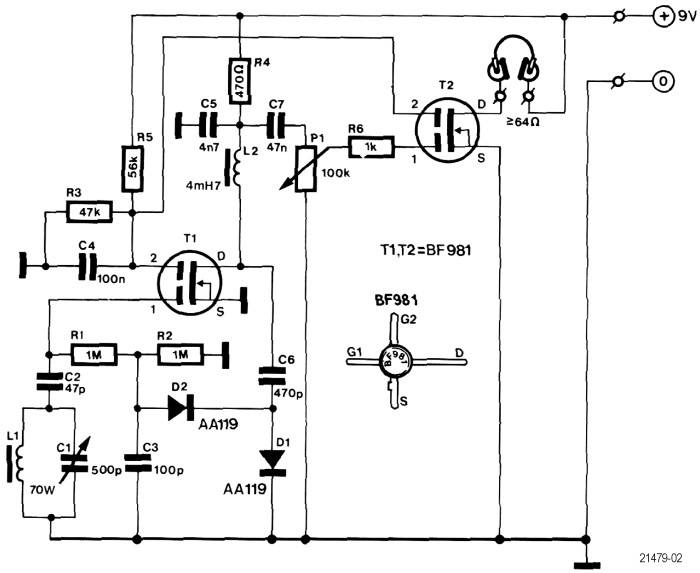Small Circuits Revival – Episode 11
on

The Reflex Receiver
idea: Elex-team
The biggest shortcoming of the simple diode receiver is that the antenna signal that has been received, has to be at least equal to the threshold voltage of the diode that is used – in the case of a germanium diode some 100-200 mV. Anything below that level will simply not pass through the detector. Therefore, to increase the sensitivity of the receiver, we have to amplify the signal before it reaches the detector – RF amplification, such as is sketched on the left of Figure 1.

This design is already capable of a significant increase in sensitivity – so much that a coil wound around a ferrite rod will suffice as the antenna. But it is possible to obtain even more gain from this circuit, namely by making ‘double’ use of the circuit – first for the RF signal and then again for the LF signal (the audio signal, that is). How that works in principle is drawn on the right of Figure 1.
The principle is as clever as it is simple. The amplified RF signal has a frequency that is much too high to pass through the filter choke to the headphones, and therefore takes another path. After rectification the signal again appears at the input of the amplifier – but now it is no longer an RF signal and after amplification it can pass right through the filter choke without any obstruction, so that it becomes audible in the headphones.

A receiver operating on this principle is called a reflex receiver. In Figure 2 (which we already show you here to tempt you), we have worked out this idea a little further. Unfortunately we have no space for the description of the schematic in this instalment – to be continued next week.
Finally a remark: a number of readers of the Elektor e-zine newsletter have noted (and not entirely unjustified) that since the disappearance of the medium-wave broadcast transmitters, there is very little activity on the medium-wave bands. Admittedly, the well-known broadcast transmitters can now only be heard on the FM band and via DAB, but there certainly are still amplitude-modulated transmitters around – do a search with Google. And of course, you can experiment with the values of the tuning circuit and, for example, have a listen on the short-wave bands...


Discussion (0 comments)